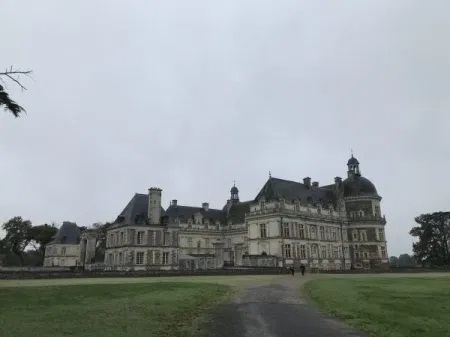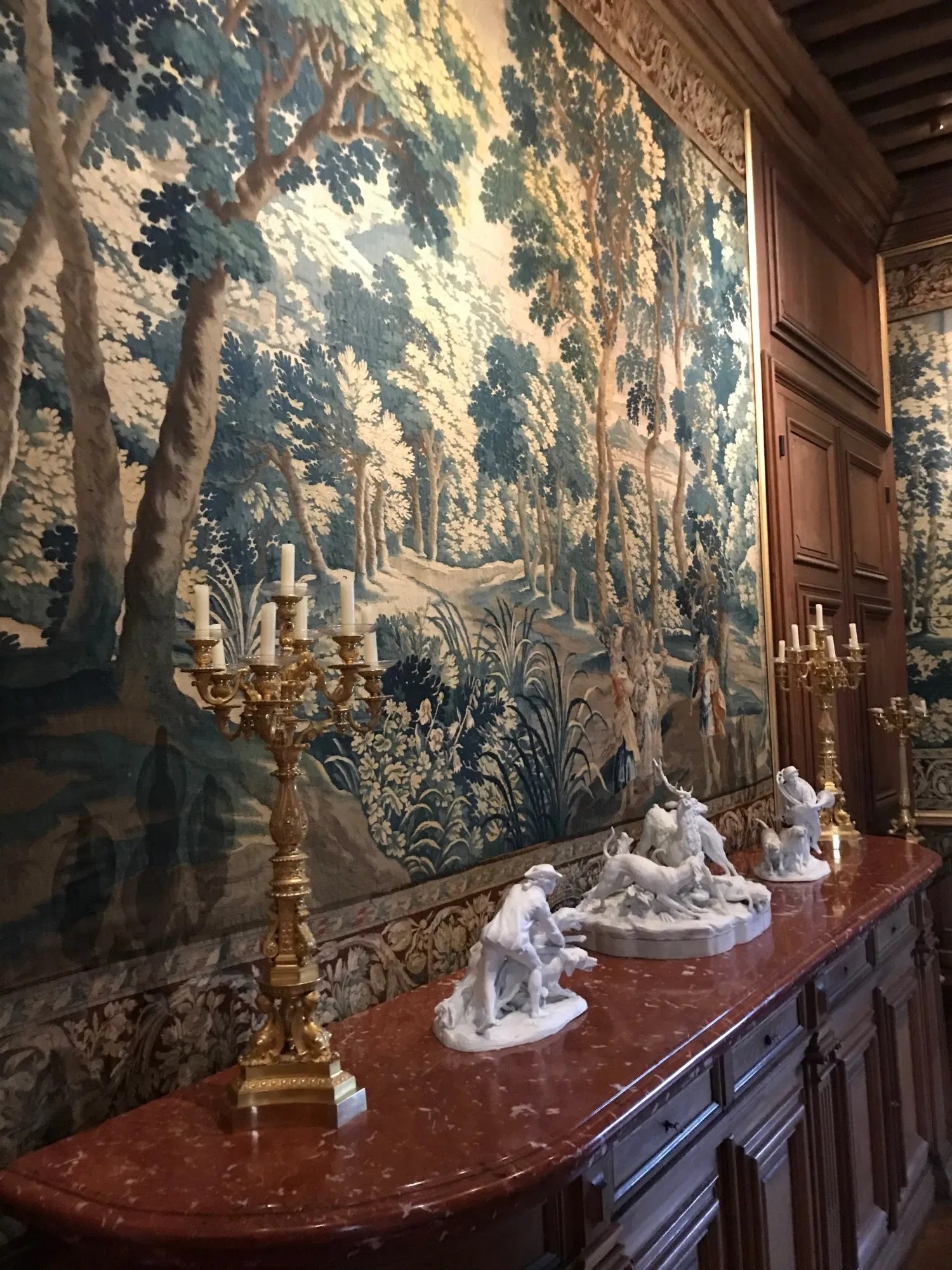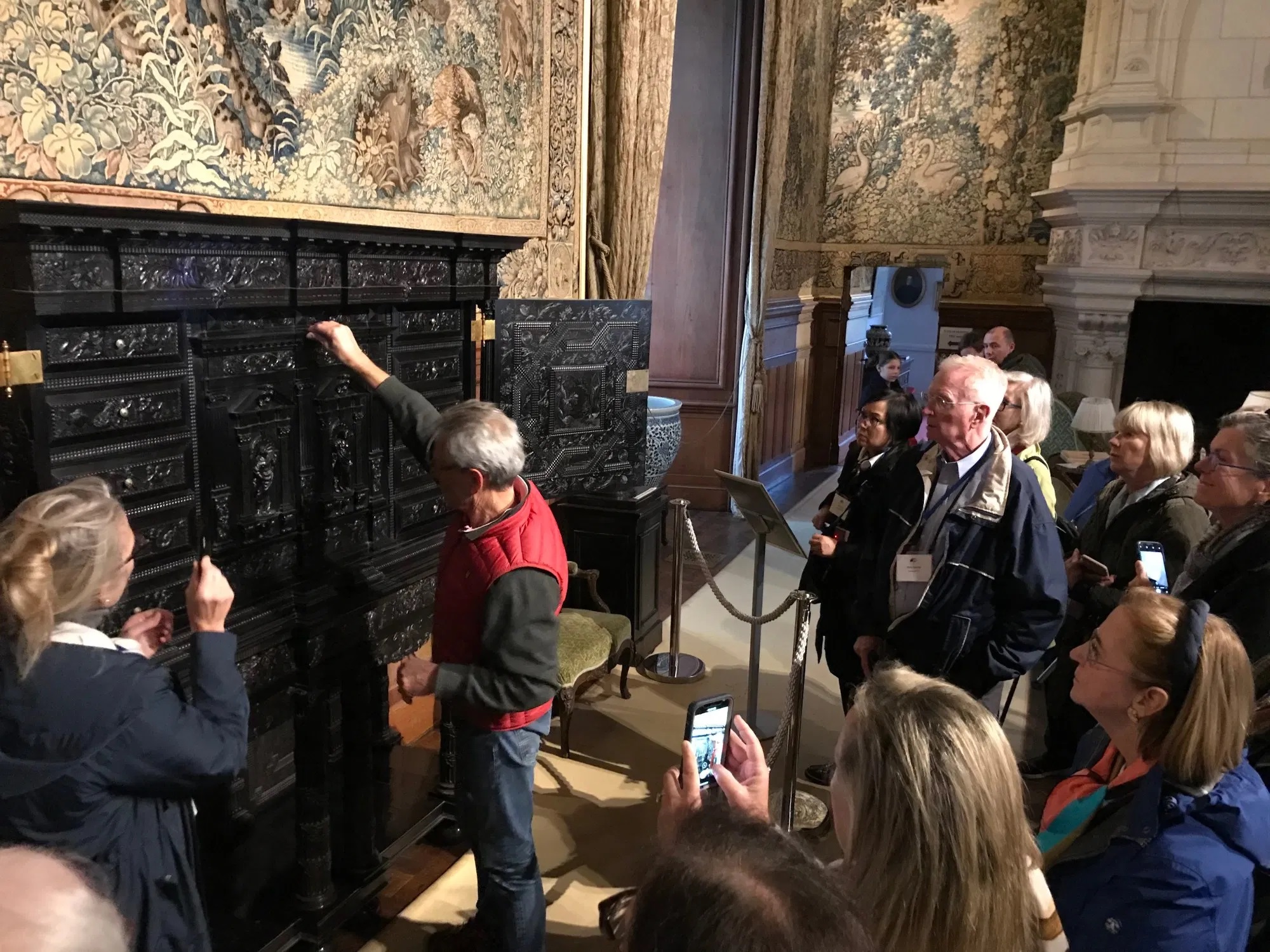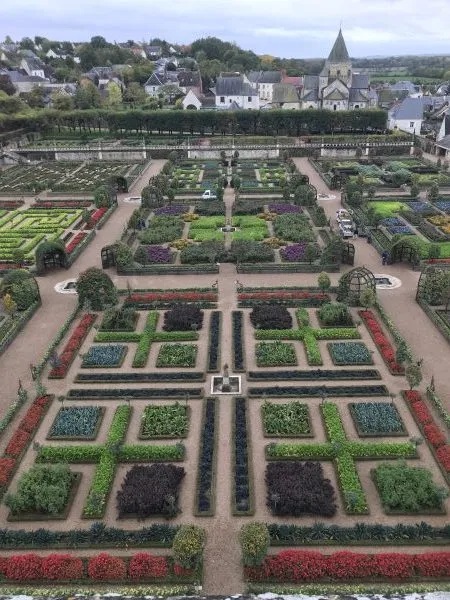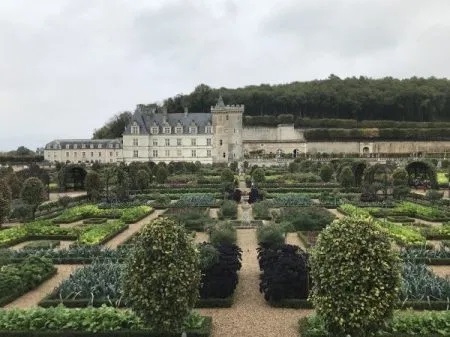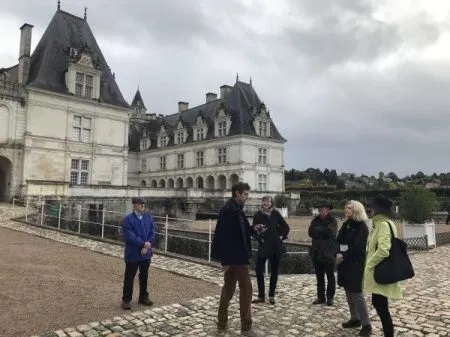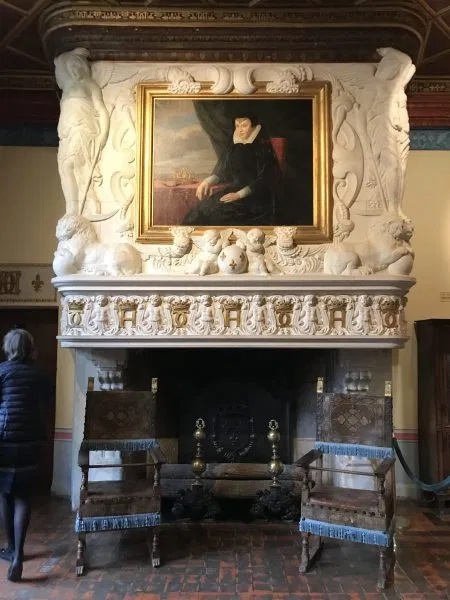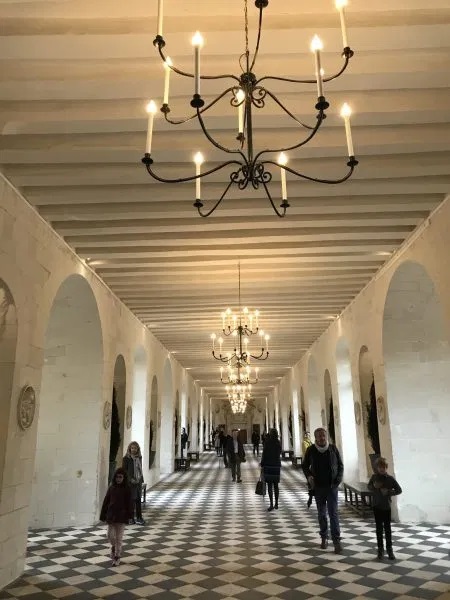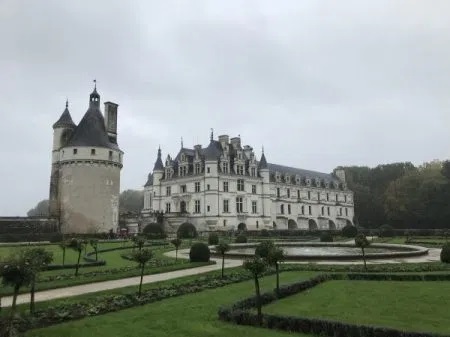Loving the Loire Valley: Notes from the Study Trip Abroad to France
Châteaux, cathedrals, museums, vineyards, and more—the Decorative Arts Trust’s exploration of over 40 sites in the Loire Valley definitely wowed the members who participated in the two sold-out programs.
The Loire is the longest river in France at 633 miles and demonstrates a stunning variability along its course to the Atlantic. The river’s voyage begins in the Vivarais mountains only 85 miles from the Mediterranean and is fed by innumerable tributaries, such as the Indre, Vienne, and Char. The novelist Gustave Flaubert described the “fertile, gentle” territory we will explore on this Study Trip Abroad as “the land of bon petit vin blanc and beautiful old Châteaux, watered by the Loire, the most French of French rivers.” He acknowledged the river’s “sung prose” with “the sort of beauty which caresses without captivating, charms without seducing and, in a word, has more good sense than grandeur, and more wit than poetry: it is France.” For sculptor Auguste Rodin, the Loire, not the Seine or the Rhône, was “the aorta of our France.”
This Study Trip Abroad in western France featured two tours: one from October 13 to October 22 and one from October 24 to November 2. The first tour commenced in Montbazon and concluded in Nantes, whereas the second started in Nantes and ended in Montbazon. The unique itinerary highlighted less-visited Lower Loire Valley hidden gems and iconic sites, with a special concentration on exclusive private visits that highlight the region’s superlative architecture, collections, gardens, and wine. The Trust also offered an optional extension focusing on Brittany’s Loire Atlantique Region from October 22 to 25, allowing some Tour 1 attendees to extend their travels and some Tour 2 attendees to begin their adventure early.
In this post, we’ll share insights into three standout sites: the châteaux of Serrant, Villandry, and Chenonceau.
Château de Serrant
Although built over three centuries, the Château de Serrant shows an amazing unity of style. Building began in 1547 on behalf of Charles de Brie to the plans of Philibert Delorme. De Brie found he lacked sufficient funds for the project and sold the property to the Duc de Montbazon with only the north tower completed. Construction resumed in the 1630s under Guillaume de Bautru, a state councilor. He continued the façade of pale white tuffeau and dark russet schist. The massive corner towers topped by cupolas lend an air of dignity, and the central pavilion contains one of the most beautiful Renaissance staircases in the region. Subsequent owners included the Marquis de Vaubrun, who added the west wing. After the Marquis’s death at the Battle of Altenheim in 1675 during the Franco-Dutch War, his widow ordered a memorial sculpture by Antoine Coysevox, which is now in the Chapel. In 1747, the estate was sold to Anthony Walsh, an exiled English shipbuilder in Nantes and friend of the Stewarts. Walsh supplied Prince Charles Edward with a fleet for his ill-fated effort to rally Scotland to his cause. The Château contains a painting that commemorates Bonnie Prince Charlie’s departure for Scotland. In 1830, the house passed by marriage into the hands of the Ducs de Trémoille, whose descendants still own it. The house contains some magnificent furnishings, notably of the Empire period, including a table by Jacob and candelabra by Thomire in the dining room. Serrant also features an important collection of Flemish tapestries and an impressive library. We were shown and incredible 17th-century ebony cabinet. Ordered in 1654 from the celebrated cabinetmaker Pierre Gole as a wedding present, the cabinet is one of a few examples known and the only one remaining in a private collection. The theater-like central reserve is stunning and contains a dozen hidden compartments. The colorful grotto is carved and painted cork.
Villandry
Villandry is the last of the great Renaissance châteaux in the Loire. It stands on the site of a feudal castle and was built in 1552 by Jean le Breton, Secretary of State to François I. It was bought in 1906 by Dr. Carvalho, founder of “La Demeure Historique,” who transformed the gardens, replacing a 19th-century English landscaped park. It is famous for the formal design of the potager, with beds of ornamental cultivars (and ordinary vegetables) outlined with vine arbours, hedges, clipped yew trees, and fountains. There is also a water garden, herb garden, and labyrinth.
Chenonceau
We approached Chenonceau via a grand avenue of plane trees and symmetrical gardens that stretches across the River Cher. The château was built over the course of the 16th century and inhabited by a succession of powerful women, each of whom left a distinctive mark. The square mansion with turreted corners was constructed 1513-17 for Thomas Bohier, Treasury Superintendent under Francois I, but in practice, Bohier’s wife, Catherine Briconnet, took charge and was the creative spirit behind the project. Notable Italian features include the dormers (early examples of the type to be found in all the Loire châteaux, still medieval in form but decorated with dolphins and candelabra in the new Renaissance manner), and the single straight staircase, doubling back on itself, which replaces the usual French spiral. In 1547, Henri II gave Chenonceau to his mistress Diane de Poitiers, who added formal gardens and built a long arched bridge (1556-1559), linking the Château with the south bank of the River Cher. After Henri’s death in 1559, Queen Catherine de Medici claimed the property and added a two-story Italian-style gallery to the bridge (1570-1576). She also expanded the park and constructed numerous outbuildings. In the 18th century, Louise Dupin hosted a literary salon at Chenonceau, attracting famous Enlightenment writers including Voltaire, Montesquieu, and Rosseau. In the 1870s, heiress Marguerite Pelouze exhausted her considerable fortune restoring Chenonceau, and, since 1913, it has belonged in the Menier family, esteemed chocolatiers, who have undertaken numerous renovations. The interiors are sumptuously furnished with period tapestries, sculptures, and paintings.
Un Grand Succès!
Albeit a bit cold and wet, the two tours and extension of the Loire Valley trip were great successes.
Study Trips Abroad are designed to engage and enlighten Decorative Arts Trust members, although non-members are welcome to join when they register. Members at the Ambassador level and above receive early registration benefits. Upcoming Study Trips Abroad include Amsterdam in March 2020, Ireland in May 2020, and Italy in October 2020. See the Decorative Arts Trust’s full calendar of events for more information about upcoming programs.
About The Decorative Arts Trust Bulletin
Formerly known as the "blog,” the Bulletin features new research and scholarship, travelogues, book reviews, and museum and gallery exhibitions. The Bulletin complements The Magazine of the Decorative Arts Trust, our biannual members publication.








